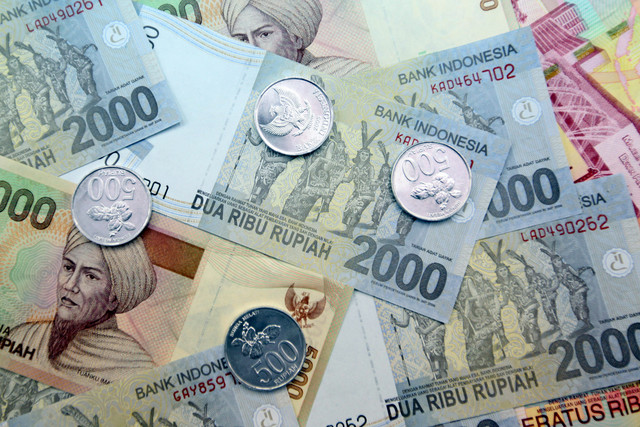
The Indonesian rupiah is melting down, again. To understand why, we must go back to August 1997. That is when — under pressure from the International Monetary Fund — Indonesia floated the rupiah. It promptly plunged to an all-time low of nearly 16,000 rupiah to the dollar in 1998, down from 2,700 at the time of the float. It then recovered to 8,950 to the dollar by the end of January 1999. But on Tuesday morning the rupiah fell to a four-year low of 11,750 to the dollar, before rebounding to 10,200 yesterday.
Early in 1998, former President Suharto realized that, unless he could stabilize the rupiah, his days were numbered. Consequently, his embrace of a fixed exchange rate governed by a currency-board system was unsurprising. So was Washington’s withering and successful attack on the currency board idea.
The IMF, the Clinton administration and Mr. Suharto all agreed on one thing: a sinking rupiah would result in a regime change. And it did. On May 21, 1998, Mr. Suharto resigned and his 32-year rule came to an end. In Washington, the fall of Suharto was hailed as a great achievement. Michel Camdessus, the IMF’s former managing director, proudly proclaimed: “We created the conditions that obliged President Suharto to leave his job.”
Indonesia’s problem today is that the managed float for its currency, which was introduced in 1997, is still in place. Given the history of the system’s introduction, the shenanigans associated with its “mandated” retention and its subsequent performance, Indonesia’s exchange-rate setup has very little credibility and fails to inspire confidence.
This lack of confidence is also linked to the IMF’s hypocritical posturing. Less than a year before the Indonesian uproar, the IMF had enthusiastically endorsed the establishment of a currency board system in Bulgaria on July 1, 1997. Under a mandate contained in the Dayton peace treaty, Bosnia and Herzegovina followed suit on August 11, 1997. That, too, received the IMF’s blessing. Both systems produced confidence shocks and stable money from day one.
If that was not enough, shortly after Mr. Suharto’s departure, Mr. Camdessus announced in August that the IMF would give Russia the green light if it chose to adopt a currency board. That was followed by another Camdessus currency-board proposal in Jan. 1999 — this time for Brazil. As it turns out, neither Russia nor Brazil adopted the idea. Nonetheless the message was sent out to Indonesians that what was good for other troubled countries was totally unacceptable for them.
This brings us to the rupiah’s current instability. Indonesia’s floating exchange-rate system is not rule based. Discretionary policies are the order of the day. As the electoral season of 2004 got underway, Bank Indonesia used its discretionary powers and turned on the money pump. This began in earnest in June, one month before the country’s first-ever direct presidential elections (coincidentally BI also increased reserve requirements in June). Reserve money continued to be ramped up, even after Susilo Bambang Yudhoyono was declared president, following the second round of the presidential elections in September. Indeed, the pump was only turned down in May-July 2005.
To understand how the money pump worked, consider BI’s balance sheet and the behavior of reserve money since May 2004. In May, reserve money grew by 14.5% on a year-on-year basis. That was due to a 36.7% growth in net foreign assets, combined with a 22.2% contraction in net domestic credit, relative to reserve money. This means that, for the month of May 2004, BI had sterilized 60.5% of the net foreign-asset inflows over the preceding year.
But, in June 2004, reserve money jumped by 37.6% measured on a year-on-year basis, with 21.9% due to an increase in net foreign assets, and the remaining 15.7% due to an expansion of net domestic credit, relative to reserve money. Instead of sterilizing net foreign-asset inflows, the central bank was augmenting them by expanding net domestic credit. This pattern of coupling foreign asset inflows with domestic credit expansion continued until June 2005. The political monetary cycle was alive and well in Indonesia.
To stabilize the rupiah, BI must lose its discretion to behave like this. A currency board would do just that. Under currency-board rules, BI would issue notes and coins backed by a minimum of 100% foreign reserves (and a maximum of 110%) and fully convertible at a fixed rate into an anchor currency. BI would not hold domestic assets and could not engage in sterilization. It would be on autopilot.
That is the way for Indonesia to fix the rupiah’s current volatility — and embark on the path to a more stable future.
Author Steve H. Hanke

0 responses on "The Rupiah Revisited"